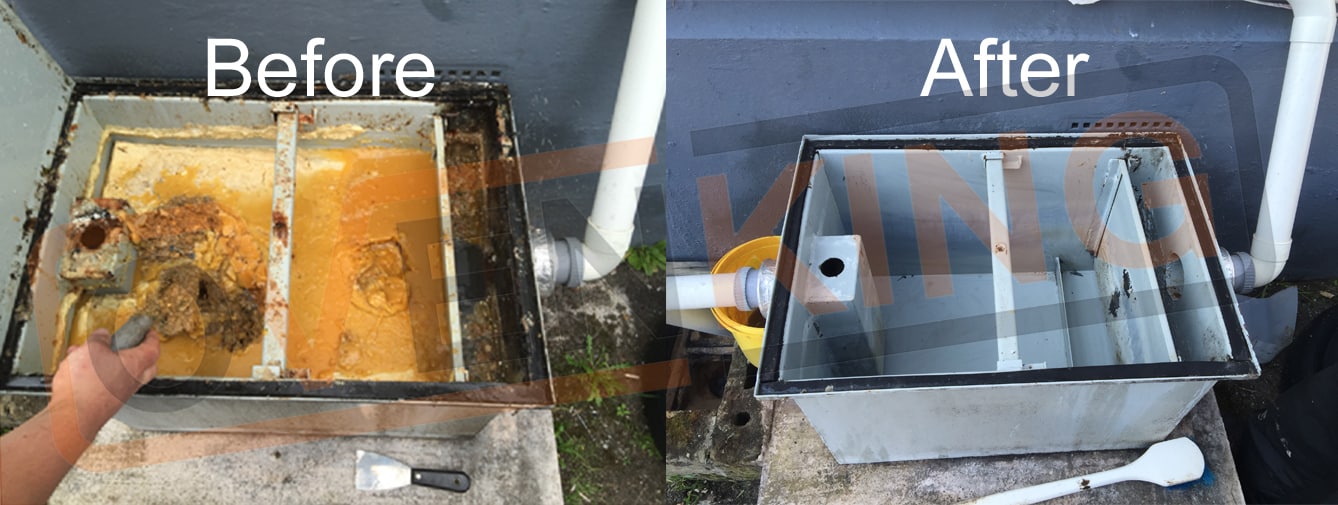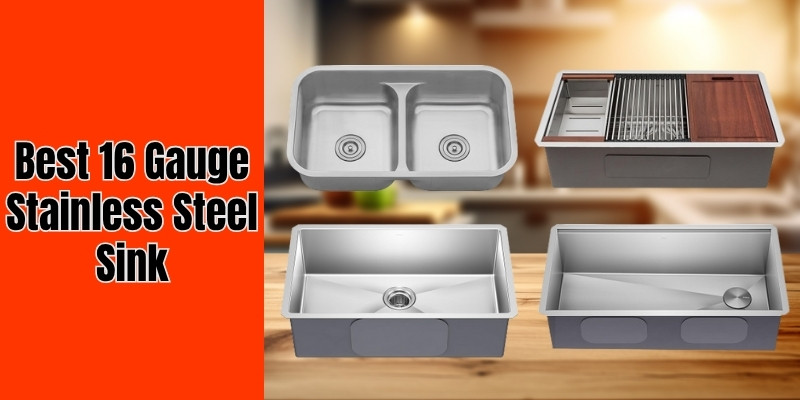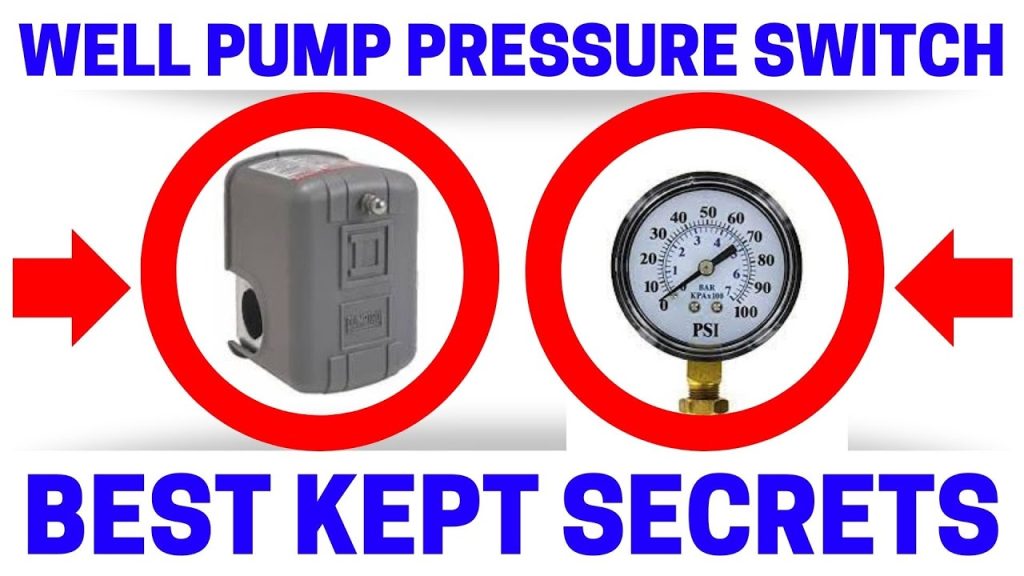Disclosure: This post contains affiliate links and I will be compensated if you make a purchase after clicking through my links. Learn More
Imagine walking into your kitchen only to be greeted by an unpleasant smell. You might not even know where it’s coming from.
The culprit? Your grease trap. Over time, grease traps can become a hidden source of foul odors and serious plumbing issues if not cleaned regularly. But how often should you really be cleaning this crucial component of your kitchen? As a restaurant owner or a home cook, you might underestimate the importance of maintaining your grease trap.
Yet, neglecting it could lead to costly repairs and health hazards. By the end of this article, you’ll have a clear understanding of how often your grease trap needs attention to keep everything running smoothly and smelling fresh. Dive in to ensure your kitchen remains a welcoming environment for cooking and dining, free from unexpected and unwelcome surprises.
Importance Of Grease Trap Cleaning
Regular grease trap cleaning prevents clogs and foul odors. Frequency depends on usage, typically every 1-3 months. Proper maintenance ensures efficient kitchen operations and protects plumbing systems.
Cleaning your grease trap regularly is crucial for maintaining a healthy and efficient kitchen. A neglected grease trap can lead to unpleasant odors, clogged pipes, and even hefty fines. Whether you’re running a busy restaurant or managing a home kitchen, understanding the importance of grease trap cleaning can save you from a lot of trouble.
Why Regular Cleaning Matters
Grease traps work by capturing fats, oils, and grease before they enter the sewer system. If not cleaned often, these substances can accumulate and harden. This buildup can block drainage pipes, causing water to back up and potentially damage your kitchen. Regular cleaning prevents these issues, ensuring smooth operation and avoiding costly repairs.
Health And Safety Concerns
Think about the hygiene implications of a dirty grease trap. Accumulated waste can become a breeding ground for bacteria. This can affect the air quality in your kitchen and pose health risks. By cleaning your grease trap regularly, you minimize these risks, ensuring a safer environment for both staff and customers.
Avoiding Legal Troubles
Have you ever considered the legal implications of a neglected grease trap? Many local regulations require regular maintenance to prevent environmental hazards. Failing to comply can result in fines or business disruptions. Staying on top of cleaning schedules keeps you compliant and worry-free.
Cost-effectiveness
Regular maintenance might seem like a chore, but it saves money in the long run. Consider the costs of emergency plumbing services or potential legal fines. Cleaning your grease trap is a small investment compared to these expenses. It’s an easy way to protect your budget.
Improved Kitchen Efficiency
A clean grease trap contributes to a more efficient kitchen. It reduces the chance of unexpected plumbing issues that can slow down operations. Have you ever experienced a sudden drainage problem during peak hours? Keeping your grease trap clean ensures your kitchen runs smoothly, no matter how busy it gets.
Personal Experience And Insight
Once, I overlooked my grease trap cleaning schedule, thinking it wasn’t a priority. The result? A surprise plumbing issue during a busy weekend. That incident taught me the value of regular maintenance. Can you afford to make the same mistake? Prioritize your grease trap, and you’ll thank yourself later.
Regular grease trap cleaning is more than just a routine task—it’s a vital part of kitchen management that impacts efficiency, safety, and compliance. By understanding its importance, you take a proactive step towards a hassle-free kitchen experience. Are you ready to prioritize your grease trap cleaning?

Credit: greasemanagement.org
Signs Your Grease Trap Needs Cleaning
A clean grease trap is vital for a kitchen’s smooth operation. Ignoring it can lead to costly repairs. Recognizing the signs of a dirty grease trap helps you act quickly. This ensures your kitchen runs efficiently. Below are some common signs that your grease trap needs attention.
Foul Odors
One of the first signs is unpleasant smells. Grease traps collect fats, oils, and grease. Over time, these materials decompose. This results in strong, foul odors. If you notice bad smells near sinks, it’s time to clean the trap.
Slow Drainage
Slow drainage indicates a clogged grease trap. Water should flow freely down the drains. If it takes too long, grease may be blocking the pipes. This issue can lead to bigger plumbing problems. Regular cleaning prevents slow drainage.
Overflow And Backups
Overflow is a severe problem. It happens when the grease trap is full. Backups can spill dirty water onto floors. This creates a messy situation. Overflow can damage kitchen equipment and cause health risks. Clean the trap regularly to prevent overflows.
Factors Influencing Cleaning Frequency
Cleaning a grease trap is crucial for smooth operations. The frequency of cleaning depends on several factors. These factors ensure the grease trap functions effectively. Understanding these can help in maintaining hygiene. It also prevents costly repairs.
Type Of Establishment
Different establishments have varying grease production levels. Restaurants often generate more grease. A coffee shop might produce less. Fast-food outlets may require more frequent cleaning. Identifying the type of establishment helps determine the cleaning schedule.
Volume Of Usage
The amount of food prepared affects grease levels. Higher food volumes mean more grease production. This requires more frequent cleaning. Smaller operations might need less frequent attention. Monitoring usage can guide cleaning schedules.
Local Regulations
Local authorities may set specific cleaning rules. Regulations vary by region. Compliance with these rules is necessary. It helps avoid penalties and fines. Checking local guidelines ensures adherence to laws.

Credit: rocketplumbingnow.com
Recommended Cleaning Schedules
Maintaining a clean grease trap is essential for any food service establishment. Regular cleaning prevents blockages and ensures efficient operation. Establishing a cleaning schedule depends on the volume of grease produced. Consider these recommended schedules to keep your kitchen running smoothly.
Weekly Cleaning
Busy kitchens benefit from weekly cleaning. High grease output requires frequent attention. Regular maintenance prevents clogs and foul odors. Schedule weekly cleanings for optimal performance. Trained staff can handle this task effectively. Staying on top of grease management keeps operations seamless.
Bi-weekly Cleaning
Smaller establishments can opt for bi-weekly cleaning. Moderate grease production allows for less frequent maintenance. Maintain efficiency with a bi-weekly schedule. Staff can manage grease without overwhelming workloads. This schedule balances the need for cleanliness with operational demands.
Monthly Cleaning
Low-volume kitchens might choose monthly cleanings. Minimal grease production means less frequent attention is needed. Monthly cleaning suffices for establishments with lighter usage. This schedule is ideal for businesses with low grease output. Ensure staff are trained to handle monthly cleanings efficiently.
Diy Vs. Professional Cleaning
Cleaning grease traps regularly prevents clogs and foul odors. DIY methods often require weekly attention. Professional cleaning typically schedules quarterly visits. Regular maintenance ensures efficient kitchen operations and minimizes costly repairs.
Cleaning your grease trap is essential for maintaining a smoothly running kitchen. Whether you choose to tackle this task yourself or hire professionals is a decision that depends on various factors. Each approach has its unique advantages and challenges. Let’s dive into the pros and cons of DIY cleaning versus hiring professional services to help you make an informed decision.
Pros And Cons Of Diy
Choosing to clean your grease trap yourself can seem like a cost-effective solution. You save money on professional fees, and scheduling is entirely up to you. Plus, there’s a certain satisfaction in handling the job with your own hands. However, DIY cleaning comes with challenges.
It’s a dirty job that requires the right tools and some knowledge about grease trap maintenance. You risk not cleaning thoroughly enough, leading to potential blockages or odor issues later on. Are you ready to take on this messy task?
Benefits Of Professional Services
Hiring a professional service to clean your grease trap offers peace of mind. Experts have the experience and equipment to ensure a thorough job. They can spot potential problems early and provide solutions before they escalate. Professional services also save you time and hassle. You can focus on running your kitchen while they handle the dirty work.
Consider how much your time is worth—sometimes, spending a little extra can save you in the long run. Choosing between DIY and professional cleaning ultimately depends on your situation. Weigh the pros and cons carefully to decide which approach suits your needs best.
Steps For Effective Grease Trap Cleaning
Cleaning grease traps regularly is crucial for maintaining efficient kitchen operations. Proper steps ensure longevity and avoid unpleasant odors. Follow these steps to clean grease traps effectively and keep your kitchen running smoothly.
Gather Necessary Tools
Start by collecting the right tools. You’ll need gloves, a bucket, a scraper, and a wire brush. These tools help you clean thoroughly and safely. Ensure you have a disposal bag for waste. Keep a flashlight handy to inspect the trap’s interior.
Empty The Grease Trap
Put on gloves before you start. Carefully remove the lid of the grease trap. Use a bucket to scoop out the grease and debris. Dispose of the waste properly in a designated bag. Make sure the trap is completely empty before proceeding.
Clean And Inspect
Use a scraper to remove any stuck grease. Scrub the trap’s walls with a wire brush. Clean each part thoroughly, ensuring no residue remains. Once cleaned, inspect for damage or wear. Check the trap’s parts and seals. If any damage is found, repair or replace immediately.
Preventive Maintenance Tips
Regular grease trap maintenance prevents costly repairs and foul odors. It’s crucial to adopt preventive measures for a smooth kitchen operation. Implementing consistent practices ensures longevity and efficiency. Below are essential tips for maintaining your grease trap.
Regular Inspections
Schedule routine checks for your grease trap. Frequent inspections help spot issues early. Look for clogs or leaks. Ensure all components are working well. This proactive approach minimizes unexpected failures. It also saves money in the long run.
Proper Disposal Practices
Dispose of grease properly to avoid buildup. Train staff to separate waste effectively. Use appropriate containers for disposal. Avoid pouring grease down drains. This simple practice reduces clogs and backups. It also keeps the system running efficiently.
Employee Training
Educate employees on grease trap maintenance. Regular training enhances awareness. Teach them cleaning procedures and safety measures. Reinforce the importance of proper disposal. Well-informed staff contribute to a healthier kitchen environment. This leads to better performance and fewer breakdowns.
Common Mistakes To Avoid
Many people forget to clean their grease traps regularly. This causes clogs and odors. Cleaning every one to three months prevents these issues. Avoid using harsh chemicals. They damage the trap. Regular maintenance saves money and headaches.
Cleaning a grease trap may seem straightforward, but many stumble upon common pitfalls that can lead to bigger problems. Understanding these mistakes can save you time, money, and the headache of dealing with a malfunctioning system. Let’s dive into the key missteps you should sidestep to keep your grease trap functioning smoothly.
Ignoring Cleaning Schedules
Sticking to a regular cleaning schedule is crucial. Neglecting this can lead to clogs and unpleasant odors. I once thought I could stretch out the cleaning intervals, only to find myself facing a greasy nightmare. Set a reminder or mark your calendar to ensure you never miss a cleaning date. Is your schedule too tight? Consider hiring a professional to help maintain consistency.
Using Incorrect Tools
The right tools make all the difference. Using makeshift items or the wrong equipment can damage your grease trap. I remember using a regular kitchen spatula, thinking it would suffice, only to scratch the interior. Invest in a proper grease trap cleaning kit. It might seem like a small step, but it can prolong the life of your system.
Improper Waste Disposal
Improper disposal of waste from the grease trap is not only a legal issue but an environmental one. Pouring grease down the drain or tossing it in the trash can lead to fines and environmental damage. Always dispose of waste at designated facilities. Have you checked your local regulations on grease disposal? It’s worth the effort to avoid unnecessary penalties.
Avoiding these common mistakes can ensure your grease trap stays in top condition. Have you ever found yourself making any of these errors? Share your story in the comments and let’s learn from each other.
Frequently Asked Questions
How Often Should You Clean A Grease Trap?
Clean your grease trap every 1 to 3 months. Frequency depends on usage and size. Regular cleaning prevents clogs.
What Happens If Grease Traps Are Not Cleaned?
Unclean grease traps lead to bad odors, blockages, and plumbing issues. Regular maintenance is key to avoid these problems.
Can I Clean The Grease Trap Myself?
Yes, but it requires proper tools and safety measures. Ensure thorough cleaning to maintain efficiency and hygiene.
Why Is Regular Grease Trap Cleaning Important?
It prevents foul smells and plumbing blockages. Regular maintenance ensures smooth operation and avoids costly repairs.
Final Words
Regular grease trap cleaning prevents clogs and costly repairs. It keeps your kitchen running smoothly. A clean trap ensures better hygiene and safety. Monthly cleaning is often recommended. Check local regulations for specific rules. Smaller traps might need more frequent cleaning.
Bigger traps can wait a bit longer. Stay proactive to avoid bad odors and backups. Keep your grease trap in top shape. A little effort saves big headaches later. Prioritize routine maintenance for peace of mind. Your kitchen deserves the best care.
Clean grease traps lead to happier, healthier kitchens. Don’t wait for problems to arise!


